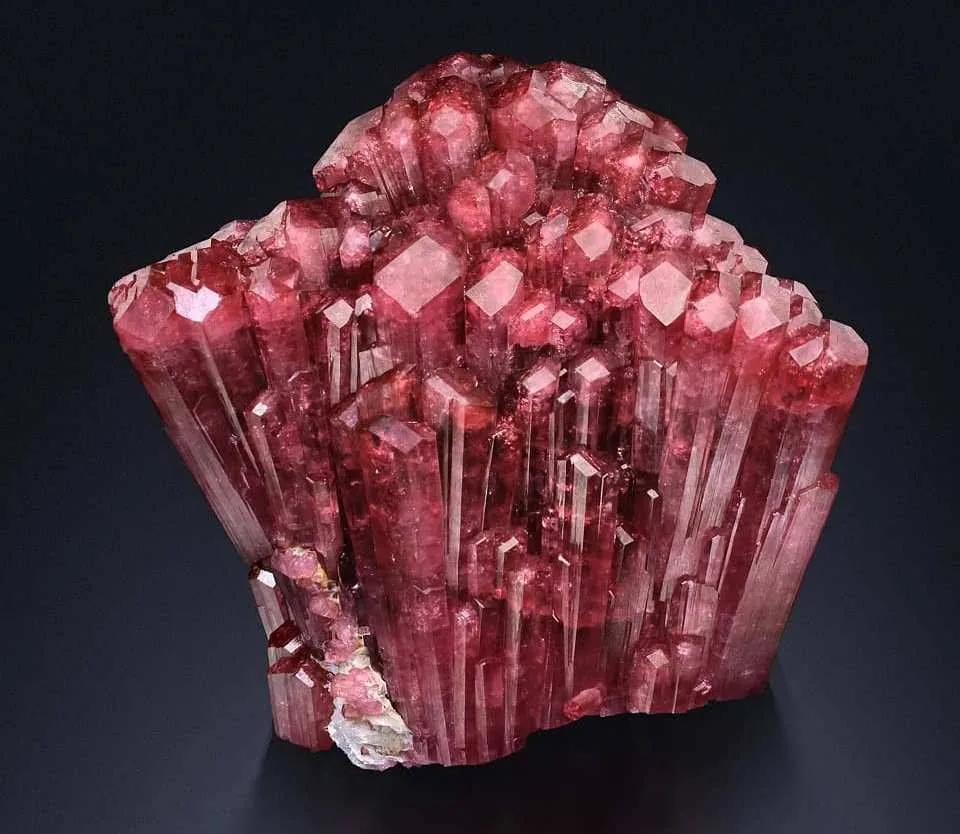
Appearance
Similar to other tourmalines, rubellites form crystals in the trigonal structural system. When cut and polished, its distinctive prismatic crystals can show a variety of aspects. Rubellites are medium- to dark-toned tourmalines with relatively rich dark pink to red colors.
Geographical Distribution
Numerous geological environments are home to tourmaline, including rubellite, which is frequently connected to granite and pegmatite formations. Magma that is located deep under the Earth’s crust has cooled and crystallized to produce these formations. Along with other gemstones and minerals, minerals like tourmaline can be deposited in the mineral-rich fluids connected to these processes.
The United States, Brazil, Madagascar, Afghanistan, Nigeria, and Mozambique are a few prominent sources of rubellite. Rubellite tourmaline has also been discovered in Namibia, Pakistan, and Russia, among other countries.
History
Similar to other types of Tourmaline, Rubellite has historically been mistaken for Ruby or even Sapphire. Rubellite was eventually found to be the “ruby” jewelry that Peter the Great (1672–1725) allegedly had commissioned for the Russian Imperial Court.
Metaphysical Properties
Rubellite is thought to have metaphysical properties that might encourage love, equilibrium, and emotional healing in several cultures. It is occasionally employed in spiritual rituals or as a healing stone.

Chemical Composition
Like other complicated borosilicate minerals, rubellite has a similar chemical makeup to other kinds of tourmaline. The chemical formula for rubellites is commonly written as (Na,Ca)(Li,Fe,Mg,Mn,Al)_3Al_6(BO_3)_3Si_6O_18(OH,F)_4. The distinct pink to red hue of rubellite is caused by the presence of manganese. The color’s strength and shade are determined by the manganese concentration.
Uses
- Fine Jewelry: Rubellite is primarily and most widely used in exquisite jewelry. It is frequently used as the focal stone in necklaces, earrings, rings, and pendants. The vivid pink to red hue of rubellite gives jewelry pieces a hint of refinement and elegance, helping them to stand out and draw attention.
- Engagement Rings: Rubellite is occasionally used in place in traditional diamond engagement rings. For couples looking for something different, its seductive and romantic hue can make for a powerful and meaningful option.
- Statement Pieces: Rubellite is frequently used for statement jewelry designs because of its vibrant color. Huge rubellite gemstones can be arranged in elaborate patterns to produce ornaments that are both aesthetically pleasing and stimulating conversations.
- Collector’s Items: Gemstone collectors are looking for high-quality rubellite specimens, particularly those with few imperfections and vivid color. Rubellite is prized by collectors for its scarcity, color variety, and the geological processes that give each piece its distinct character.
- Fashion and Accessories: Rubellite is also used in hairpins, watches, and other fashion accessories like brooches. Its color gives many fashion pieces a hint of richness.
- Investment: High-quality rubellite gemstones are bought by certain individuals as investments. Gemstones are a desirable alternative for investment diversification since they have the potential to increase in value over time, especially those with remarkable attributes.
Table





